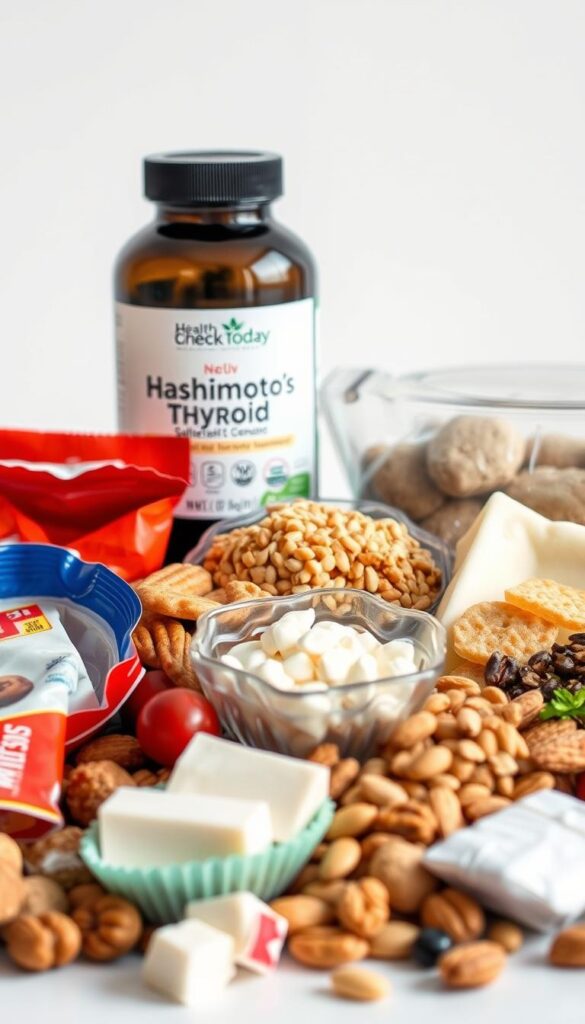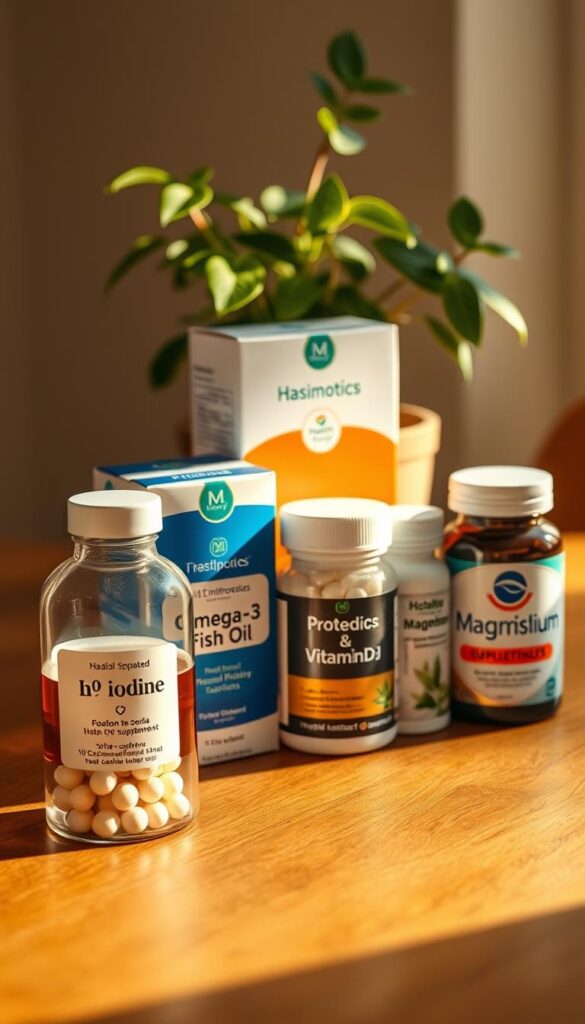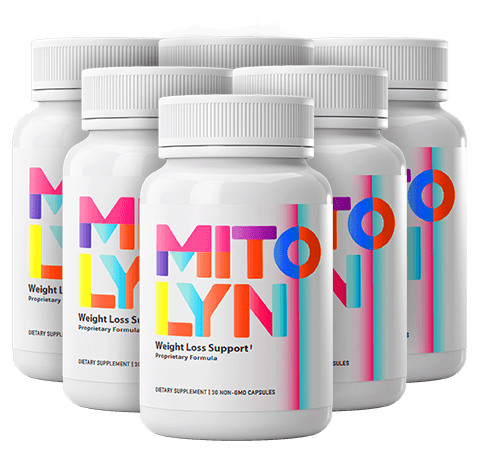
Imagine waking up feeling heavy, tired, and out of sync. Hashimoto’s thyroiditis messes with your metabolism. It makes you feel fatigued, gain weight, and get brain fog. But, what if your next meal could help?
The right foods might calm inflammation, balance hormones, and boost energy. This shows the Hashimoto’s diet is more than just managing symptoms. It’s about taking back your life.
Science proves diet is key. Studies show gluten-free diets can lower thyroid antibodies in women. Foods like leafy greens and bone broth can also reduce inflammation. Even small changes, like eating more protein, can help with energy and mood.
The Hashimoto’s thyroid diet isn’t a one-size-fits-all solution. It offers ways to work with your body, not against it.
This journey is about finding out what fuels your body to thrive. You’ll learn how nutrients like selenium and vitamin D help your thyroid. Avoiding gluten or lactose can also help reduce flares. Every bite matters, and small changes today can lead to fewer symptoms tomorrow.
Key Takeaways
- A gluten-free or Hashimoto’s diet may lower antibodies and improve thyroid function.
- Anti-inflammatory foods like fruits, vegetables, and bone broth reduce inflammation and oxidative stress.
- Key nutrients like vitamin D, selenium, and magnesium are critical for thyroid health.
- Limiting gluten, lactose, and sugary foods can ease symptoms and improve blood sugar balance.
- Personalized approaches, like the Autoimmune Protocol (AIP), have shown promise in clinical trials.
Understanding Hashimoto’s Disease and Its Relationship with Diet
Hashimoto’s thyroiditis is an autoimmune condition. It happens when your immune system attacks your thyroid gland. This disrupts hormone production, leading to fatigue, weight changes, and other symptoms. The hashimotos diet guidelines focus on reducing inflammation and supporting thyroid health. Let’s explore how your diet plays a critical role.
What Happens in Your Body with Hashimoto’s
Autoimmune antibodies damage thyroid tissue over time. This reduces hormone output. Symptoms include brain fog or dry skin. Genetics and environmental triggers like diet can set off this cycle.
How Food Affects Your Thyroid Function
Your diet directly impacts thyroid health. Nutrients like selenium and zinc support hormone conversion. But, goitrogens in raw cruciferous veggies might interfere if consumed in excess. Hashimotos diet plans often recommend cooking these foods to reduce goitrogenic effects.
| Nutrient | Role | Sources |
|---|---|---|
| Selenium | Activates thyroid hormones | Brazil nuts, tuna |
| Zinc | Supports hormone production | Oysters, pumpkin seeds |
| Vitamin D | Regulates immunity | Fatty fish, fortified milk |
The Inflammation Connection
- Pro-inflammatory foods (sugar, processed meats) boost CRP, worsening symptoms.
- Studies show the autoimmune protocol (AIP) diet reduced CRP levels in 16 women with Hashimoto’s.
- High iodine intake can worsen thyroid damage—so moderation is key.
Following hashimotos diet guidelines helps limit triggers and reduce flare-ups. Simple swaps like choosing wild-caught salmon over fried foods can make a difference.
The Best Diet for Hashimoto’s: Core Principles
When looking for the best diet for hashimotos, remember everyone is different. Hashimotos diet tips start with foods that fight inflammation and are full of nutrients. Avoid foods that make you feel bad. There’s no one-size-fits-all plan, but these key ideas can help:
“75% of those with Hashimoto’s on a gluten-free diet saw symptom improvement.” — Survey of 156 individuals

- Whole foods first: Eat fresh veggies, lean proteins, and healthy fats.
- Nutrient density: Eat foods rich in selenium like Brazil nuts and fatty fish.
- Gut support: Choose foods like sauerkraut that help your digestion.
| Diet Approach | Key Focus | Examples |
|---|---|---|
| Gluten-Free | Inflammation reduction | Quinoa, almond flour |
| AIP | Eliminate inflammatory triggers | Wild-caught salmon, leafy greens |
| Low Glycemic | Blood sugar stability | Avocado, lentils, berries |
Vitamin D is very important—get 15–30 minutes of sunlight each day. Watch how your body reacts to foods like dairy or nightshades. Hashimotos diet tips also include getting regular blood tests to check nutrient levels like selenium (100–300 mcg daily from foods like tuna or supplements).
Try new things carefully. What works for one person might not work for another. Always talk to a healthcare provider before making big changes.
Foods to Embrace on a Hashimoto’s Diet
Start your hashimotos nutrition plan with foods that heal. Choose anti-inflammatory, nutrient-rich, and easy-to-digest foods. These hashimotos friendly foods help your thyroid and reduce flare-ups.

Anti-Inflammatory Powerhouses
Colorful, nutrient-packed foods fight inflammation. Try:
- Dark leafy greens like spinach and kale
- Berries (blueberries, strawberries)
- Fatty fish (salmon, mackerel) rich in omega-3s
- Turmeric with black pepper to boost absorption
A 2015 study found that 85% of participants with low vitamin D saw reduced antibodies after 4 months of supplementation.
Thyroid-Supporting Nutrients
Key nutrients like selenium and zinc are thyroid essentials. Include:
- Brazil nuts (1-2 daily for selenium)
- Seaweed for iodine (in moderation)
- Pumpkin seeds for zinc
A 2021 study noted selenium supplements lowered antibodies in some cases. Always consult a healthcare provider before adding supplements.
Gut-Healing Superfoods
A healthy gut supports thyroid health. Add:
- Fermented foods (kimchi, sauerkraut)
- Bone broth for gut lining support
- High-fiber veggies like sweet potatoes and artichokes
Consider an elimination diet approach, but avoid overly restrictive plans without guidance.
Protein Sources for Thyroid Health
Lean proteins keep metabolism balanced. Opt for:
- Grass-fed chicken and turkey
- Wild-caught fish
- Plant-based options like lentils and tempeh
Limit red meat, as studies link high intake to increased Hashimoto’s risk.
Pair these foods with hydration and mindful eating for best results. Small swaps like swapping processed snacks for nuts or berries can make a difference. Your body deserves nourishment that aligns with your health goals.
Foods to Avoid When Managing Hashimoto’s
Knowing which foods to limit is key to managing Hashimoto’s. Foods like gluten, soy, and processed items can make symptoms worse. It’s also important to watch out for hidden sources in sauces, snacks, and additives.

- Gluten: Found in wheat, barley, and rye. Over 76% of those with Hashimoto’s have lactose intolerance, often linked to dairy cross-reactivity.
- Soy and soy-based additives: These block thyroid medication absorption. Wait 2–3 hours between soy intake and your thyroid pills.
- Processed meats: Hot dogs, bacon, and deli meats contain preservatives linked to inflammation.
- Added sugars: Soda, candy, and baked goods fuel inflammation, worsening symptoms, per recent studies.
“A study found gluten-free diets improved thyroid function and vitamin D levels in Hashimoto’s patients.”
Hidden sources can be found in salad dressings, sauces, and packaged snacks. Always check labels for soy, gluten, or inflammatory oils like canola or vegetable blends.
- Molecular mimicry: Your immune system mistakes gluten proteins for thyroid tissue.
- Leaky gut: Processed foods damage gut lining, letting toxins enter your bloodstream.
- Inflammation spikes: Sugars and fried foods trigger cytokines, worsening autoimmune activity.
Everyone’s triggers are different. Keep track of how you react to certain foods. Then, talk to a healthcare provider for advice on your hashimotos diet. Even small changes can help a lot in managing your health.
Going Gluten-Free with Hashimoto’s and Gluten Free Diet
More than 75% of people with Hashimoto’s feel better on a gluten-free diet. Gluten can confuse the immune system, making it think it’s fighting thyroid tissue. Cutting out gluten can help reduce inflammation and support the thyroid.

Switching to gluten-free needs smart planning. Here are some tips for the hashimotos diet:
- Check labels for hidden gluten in sauces, soups, and processed snacks.
- Focus on naturally gluten-free grains like oats (certified gluten-free), quinoa, and brown rice.
- Always ask restaurants about cross-contamination in kitchens.
A study showed gluten-free diets can lower thyroid antibodies in 6 months. Vitamin D levels also go up. But, it’s important to avoid empty gluten-free snacks. Choose whole foods instead.
When eating out or traveling, pick fresh proteins and veggies. Many see energy boosts in weeks, but full benefits take 3–6 months. Working with a dietitian helps ensure you get balanced nutrition during this change.
Even small steps help. Swapping pasta for zucchini noodles is a good start toward better thyroid health.
Essential Supplements for Hashimoto’s Support

Supplements can help your hashimotos thyroid diet plan. They fill in nutrient gaps. Talk to your doctor to find the right supplements for you.
Many with Hashimoto’s lack important vitamins and minerals. These are key for thyroid health.
“Supplementing with selenium can reduce thyroid antibodies by up to 50% in 3–6 months.”
Vitamin D and Selenium: Your Thyroid’s Dynamic Duo
These nutrients are crucial for thyroid health. Look for hashimotos supplements that include:
| Supplement | Why It Matters | Optimal Dose |
|---|---|---|
| Vitamin D | 85% of Hashimoto’s patients have deficiencies | 5,000–10,000 IU daily for 50 ng/mL blood levels |
| Selenium | Supports T4→T3 conversion | 200 mcg daily from high-selenium foods or supplements |
Probiotics: Balancing Gut & Thyroid Health
Up to 50% of Hashimoto’s patients have gut imbalances. Choose probiotics with Lactobacillus and Bifidobacterium strains. They help reduce inflammation.
Adding digestive enzymes can improve nutrient absorption. This is key for better health.
Smart Supplementation Habits
- Always get lab tests before starting new hashimotos supplements
- Choose supplements free of fillers—opt for brands like the Thyroid Support blend (zinc, selenium, vitamins A/C/E)
- Pair with a nutrient-rich hashimotos thyroid diet for best results
Think about the Gut Health Bundle ($163.80 for 10% savings). It includes enzymes and probiotics. It helps with gut-thyroid connections. Always choose quality and follow your doctor’s advice to avoid bad interactions.
Building Your Hashimoto’s Nutrition Plan
Your hashimotos nutrition plan starts with knowing your body. Hashimotos diet guidelines are a good start, but they might not fit everyone. Start by watching how you feel after eating. A 2024 study found that a special diet helped women with Hashimoto’s feel better.

Here’s how to make your plan:
- Build a nutrient base: Eat whole foods like greens, fish, and Brazil nuts. The Mediterranean diet is good for your thyroid.
- Test triggers: Try not eating certain foods for 30 days. Then, add them back one at a time to see how you react.
- Adapt mindfully: Eat a mix of protein, fats, and carbs. For example, choose avocado or nuts instead of junk food.
Make changes that last. Small steps like adding spinach or choosing wild salmon are good. A 2021 study showed that anti-inflammatory diets help Hashimoto’s symptoms. Don’t be too hard on yourself—flexibility is key.
Work with a healthcare provider to make your plan. It might include Mediterranean diet ideas and your own special touches. Remember, your hashimotos nutrition plan is about finding what works for you, not being perfect.
Delicious Hashimoto’s-Friendly Recipes
Make your kitchen a place where your thyroid thrives with hashimotos diet recipes. These dishes are not only tasty but also help your body feel better. They focus on foods that fight inflammation and avoid gluten or dairy.

Energizing Breakfast Options
- Green Smoothie Bowl: Mix spinach, banana, almond milk, and chia seeds. Add shredded coconut and goji berries for a healthy start.
- Avocado Toast: Spread mashed avocado on gluten-free bread (like Siete’s cassava flour blend). Sprinkle with hemp seeds and turmeric.
Satisfying Lunch and Dinner Ideas
Try these hashimotos friendly foods in your meals:
- Moroccan Chicken Stew: Cook chicken thighs with sweet potatoes, carrots, and turmeric. Turmeric helps your thyroid.
- Creamy Shrimp Skillet: Cook shrimp in coconut oil with zucchini and garlic. Shrimp is good for your thyroid.
- Thai Basil Cauliflower Fried Rice: Pulse cauliflower, then sauté with veggies and tamari (soy-free sauce).
Meal Prep Strategies for Success
Batch-cook veggies or bone broth to make meals easy. Store them in airtight containers for quick dinners. Try zucchini noodles or lentil pasta instead of regular pasta.
Check out these hashimotos diet recipes for meals that are good for you and delicious. Small changes, like using coconut aminos instead of soy sauce, can make a big difference. Your meals can be both tasty and healthy!
Conclusion: Your Path Forward with a Hashimoto’s Diet
Research shows the best diet for hashimotos can change your health. A study followed 180 people. Those on a low-carb, high-protein diet saw thyroid antibodies drop by up to 57%. Control groups saw antibodies rise, showing diet matters.
Your journey starts with reducing inflammation and supporting your thyroid. Hashimotos diet tips begin with making your diet personal. Aim for 50-60% protein, 12-15% carbs, and 25-30% fats. Avoid gluten and dairy if you’re sensitive.
Over 88% of people felt better after cutting gluten. 79% improved on dairy-free diets. Watch how foods affect your energy and symptoms to improve your diet.
Persistence is key. Full antibody improvements may take 3 months. But small changes add up. Add vitamin D, B12, and iron supplements if needed.
69% of those taking B12 felt less tired. Work with a dietitian who knows about autoimmune diets. Remember, 90% of participants felt better on autoimmune paleo diets, showing structure works.
This isn’t a quick fix but a lifelong investment. Small steps like swapping refined carbs for leafy greens or adding bone broth daily can build momentum. Celebrate progress, even if antibodies drop slowly. Every meal is a chance to fuel resilience.
Your health journey is unique, so stay patient and curious. The best diet for hashimotos isn’t just about restrictions. It’s about building a foundation for energy and vitality.















